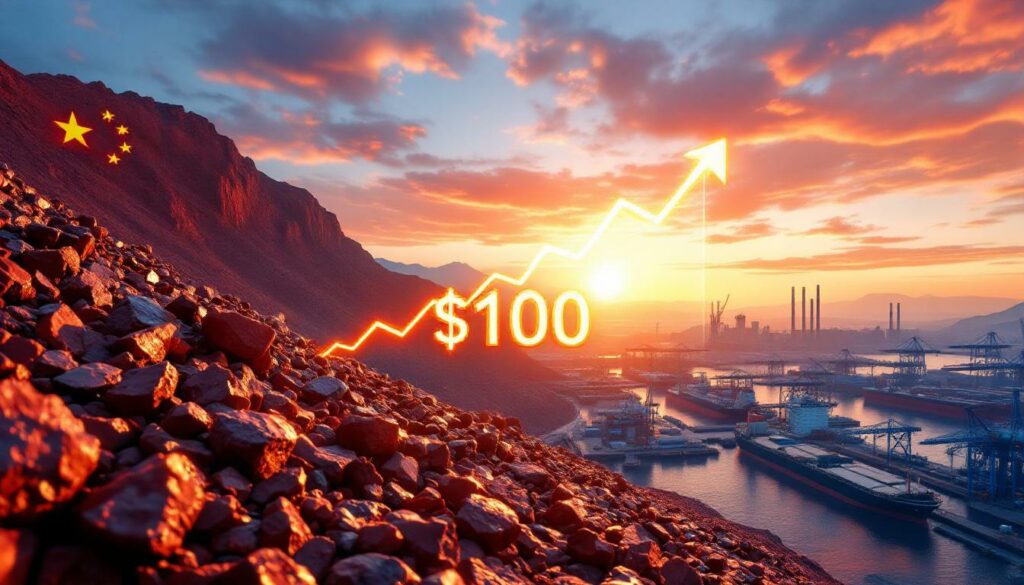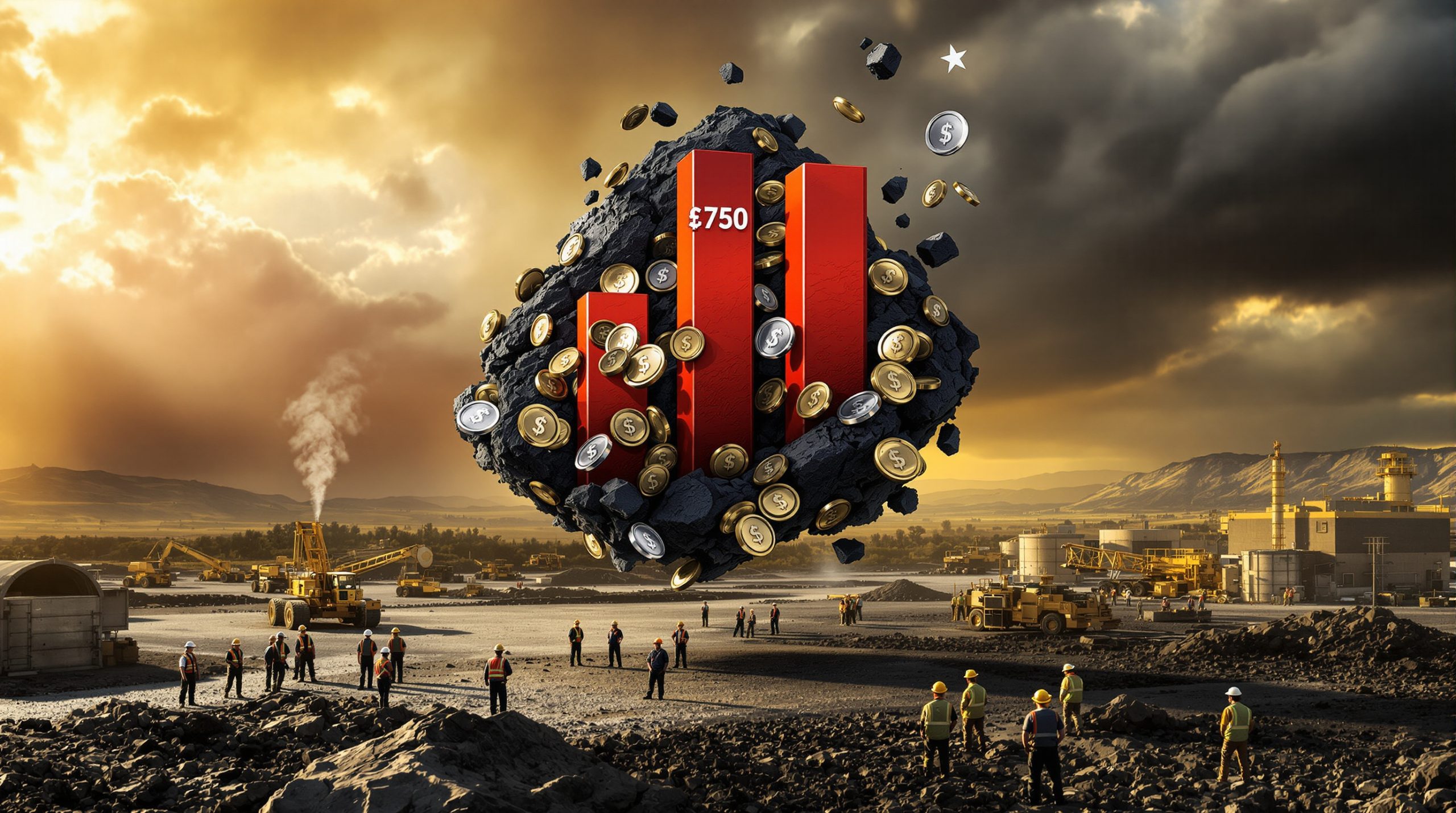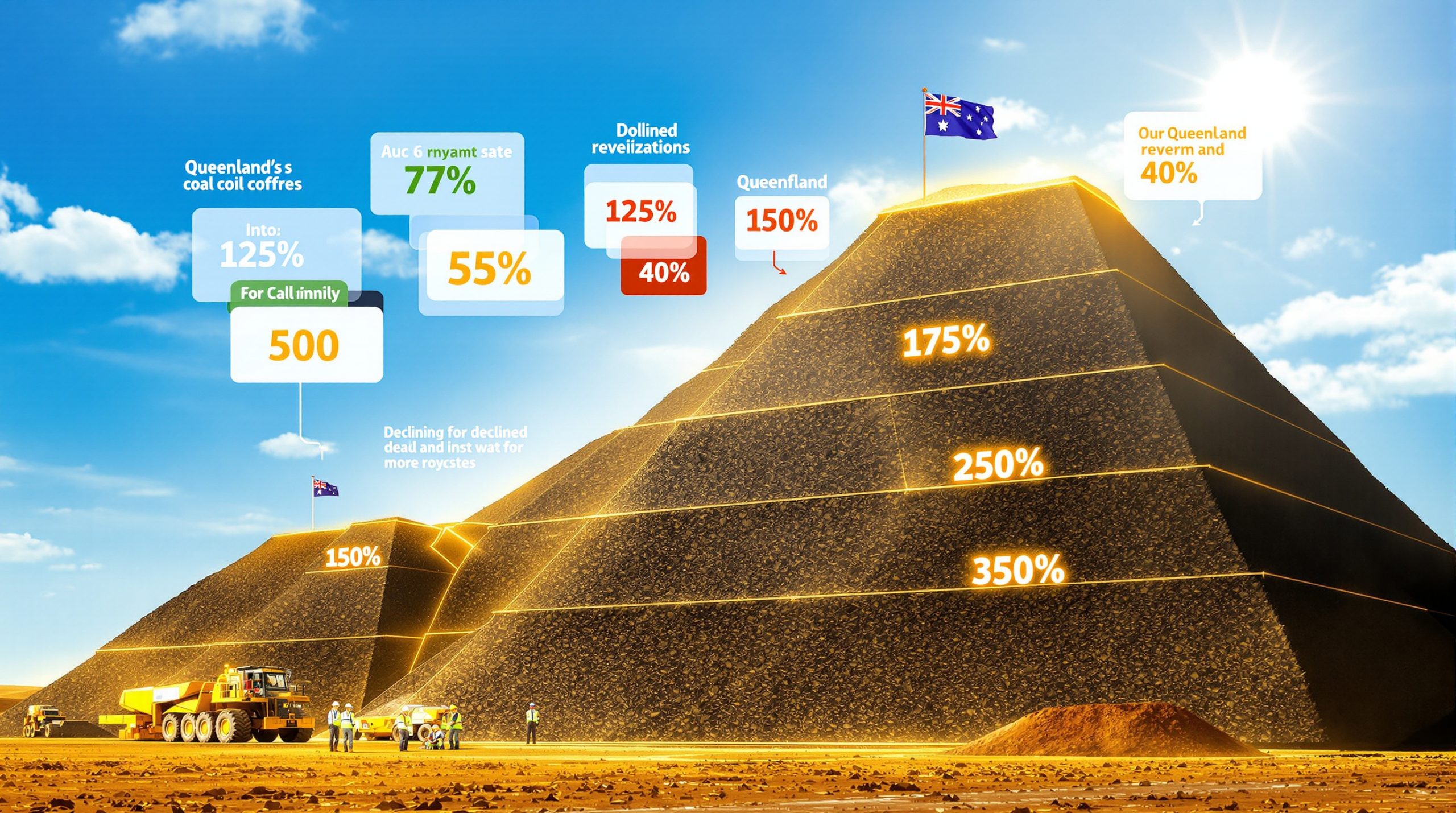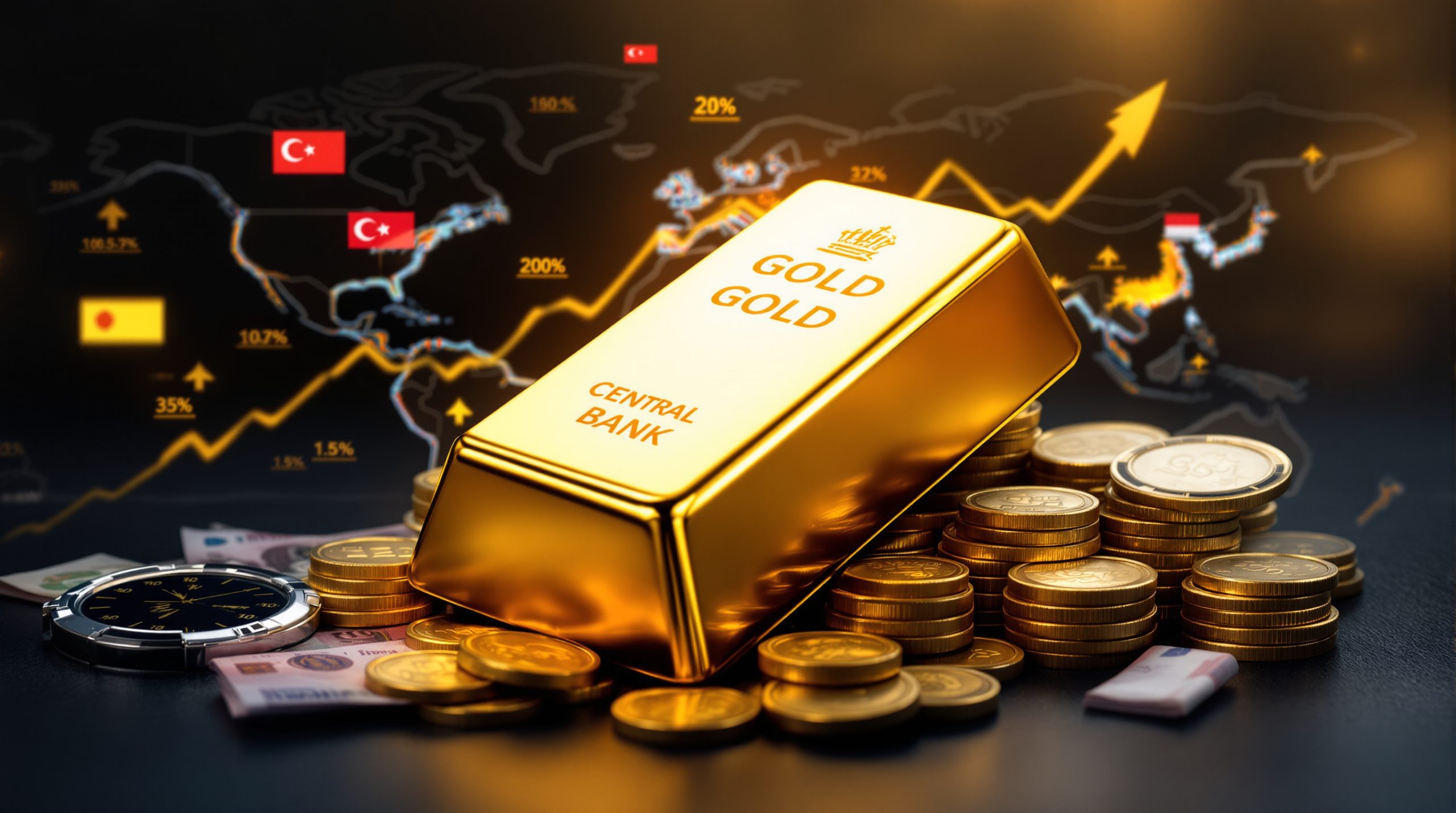What Is Driving the Recent Iron Ore Price Increase to $100?
Iron ore prices have surged past the symbolic $100 per ton threshold in July 2025, marking the first time since May that the essential steelmaking ingredient has traded in triple digits. The benchmark iron ore futures in Singapore climbed more than 1.1% in recent trading sessions, reaching $100.10 per ton as investor confidence strengthens around China's economic outlook.
This notable price movement has been primarily fueled by renewed optimism regarding Chinese economic policies, creating a supportive environment for commodities linked to infrastructure and construction.
Understanding China's Renewed Market Sentiment
The rally comes as Chinese government officials announced concrete plans to address issues that have been hampering economic growth. According to Bloomberg News, "Chinese officials pledged to tackle excessive competition and outdated capacity, as well as deliver additional property-led policy measures" – a move that signals Beijing's commitment to stabilizing key industrial sectors.
These policy announcements have had an immediate effect on market psychology, with yuan-priced iron ore futures on the Dalian Commodity Exchange showing corresponding advances as traders position themselves for potential demand increases.
The price movement reflects a delicate balance between supply constraints and renewed expectations for Chinese stimulus measures targeting the property sector, which remains a critical driver of steel consumption in the world's largest metal market.
Impact of Policy Announcements on Market Psychology
Market analysts note that even the promise of property sector support has been enough to shift sentiment, demonstrating the significant psychological component driving current pricing. The construction sector, particularly visible in cities like Dalian, serves as a tangible indicator of potential future iron ore demand trends.
"The market is responding not just to current consumption patterns but to anticipated demand based on policy signals," notes mining sector economist Wei Zhang. "This forward-looking approach often drives prices ahead of actual consumption changes."
Beyond immediate policy impacts, traders are also factoring in seasonal construction patterns that typically see increased activity in late summer and early autumn months, potentially providing additional support for prices through Q3 2025.
How Will the Simandou Project Impact Global Iron Ore Markets?
The timing of the price surge coincides with significant news regarding one of the world's largest untapped iron ore deposits. Rio Tinto recently announced an accelerated timeline for the massive Simandou project in Guinea, which promises to reshape global supply dynamics in the coming years.
Rio Tinto's Accelerated Timeline
In a development that surprised many industry observers, Rio Tinto revealed that first shipments from Guinea's Simfer mine are now scheduled for November 2025 – considerably earlier than the original 2026 target. The mining giant plans to export an initial volume of 0.5-1 million tons from blocks 3 and 4 of the Simandou project, marking the beginning of what could become a transformative new supply source.
The acceleration of this timeline has significant implications for market participants who must now recalibrate their medium-term supply projections. Despite the relatively modest initial volumes, the symbolic importance of Simandou's first shipments cannot be overstated.
Long-Term Production Projections
While the November shipments represent just the beginning, the full scope of the Simandou project is immense. The total capacity is estimated at an impressive 120 million tons annually once fully operational – equivalent to approximately 10% of current global seaborne iron ore supply.
According to Royal Bank of Canada analysts cited by MINING.COM, the project is expected to follow a measured ramp-up schedule:
"Analysts at Royal Bank of Canada expect a ramp-up to 12 million tons in 2026, not reaching 48 million tons until 2028."
This gradual scaling provides some buffer for markets to adjust to the new supply source, potentially preventing dramatic price collapses that might occur with more rapid expansion.
The project's complex ownership structure – a joint venture between Rio Tinto, the Winning Consortium Simandou, and other partners – reflects both the scale of investment required and the strategic importance of diversifying global iron ore supplies.
Infrastructure Challenges and Geological Advantages
What makes Simandou particularly notable beyond its size is the exceptionally high-grade ore deposits, with iron content exceeding 65% – significantly above the industry benchmark 62% Fe content that prices typically reference. This quality advantage means Simandou ore will likely command premium pricing once available in commercial quantities.
However, the project continues to face substantial infrastructure challenges, including the construction of the massive Transguinéen railway spanning approximately 650 kilometers through challenging terrain. The ability to meet the accelerated timeline will depend heavily on the progress of these supporting transportation networks.
Are Current Iron Ore Prices Sustainable?
Despite the current bullish sentiment, questions remain about whether the price rally reflects fundamental market conditions or is primarily sentiment-driven. Several prominent analysts have expressed skepticism about the sustainability of prices above the $100 mark.
Analyst Perspectives on Market Fundamentals
Citigroup analysts, including Shreyas Madabushi, have adopted a notably cautious stance on the recent price movements. They assess current prices as trading "above market fundamentals" – suggesting the rally may be built more on optimism than on actual supply-demand dynamics.
The Citigroup team specifically predicts a "gradual decline in steel output rather than a one-size-fits-all 50 million ton cut" – indicating they believe Chinese steel production will moderate rather than collapse, providing a softer landing for iron ore prices than some scenarios suggest.
This measured outlook is reinforced by the mixed performance seen in Shanghai steel contracts, where trading patterns suggest market participants remain uncertain about the direction of Chinese industrial policy implementation.
Supply-Side Considerations
On the supply front, Rio Tinto recently reported its Q2 iron ore shipments from Australia's Pilbara supply safety region at 79.9 million tons – a figure slightly below analyst expectations of 81.93 million tons. This minor underperformance illustrates the challenges in maintaining consistent high-volume production even for established operations.
The Pilbara region remains the world's most significant iron ore supply center, with its production stability serving as a fundamental anchor for global pricing. Any disruptions to Australian supply chains, whether due to weather events, labor disputes, or operational challenges, can have outsized effects on global prices.
Market Analysis: "The sustainability of current prices depends largely on whether China's promised policy support materializes in the form of actual construction activity and steel demand," notes commodities strategist Michael Chen. "Without concrete demand increases, the fundamental case for $100+ iron ore becomes difficult to justify."
Price Elasticity and Cost Curve Analysis
Industry cost curve analysis suggests most major producers remain comfortably profitable at current price levels. Australian and Brazilian producers typically maintain production costs between $30-45 per ton, providing substantial margins even if prices retreat moderately from current levels.
This production economics reality creates a cushion that limits downside price movement, as supply typically remains stable until prices approach these cost thresholds. However, it also means that additional supply from marginal producers becomes economically viable at prices above $80, potentially creating natural price ceilings in the absence of demand surges.
How Does China's Steel Industry Affect Iron Ore Demand?
The intricate relationship between China's steel production decisions and global iron ore markets remains the single most important factor driving price movements. As the producer of more than 55% of global steel, China's industrial policies create ripple effects throughout the entire commodity supply chain.
Production Capacity and Utilization
Discussions among analysts about potential steel output reductions have become increasingly prominent in recent market commentary. Citigroup's specific reference to "50 million ton cut" scenarios represents one of the more dramatic potential outcomes being evaluated.
Such a reduction would represent approximately 4-5% of China's annual steel output, creating a significant demand gap for iron ore. However, the consensus view appears to be shifting toward more moderate output adjustments rather than dramatic cuts, reflecting the government's balanced approach to industrial reform.
Current steel mill capacity utilization rates in China remain near 85%, according to China Iron & Steel Association (CISA) data – a level that suggests room for moderate production decreases without fundamentally restructuring the industry.
Construction Sector Influence
The property market remains unquestionably the most significant driver of steel demand in China, accounting for approximately 35% of total steel consumption. This outsized influence explains why promised "property-led policy measures" have such immediate effects on iron ore pricing.
Recent policy signals suggest a targeted approach to stimulating construction activity in specific urban centers rather than the broader stimulus measures seen in previous economic cycles. This more surgical approach aims to address housing inventory imbalances while avoiding the creation of additional property bubbles.
Construction activity in cities like Dalian serves as a visible barometer for implementation of these policies. Satellite imagery analysis from major ports reveals that construction material unloading has increased 8% year-over-year in Q2 2025, suggesting some early positive response to policy announcements.
Steel Production Technology and Iron Ore Grades
A critical but often overlooked factor influencing iron ore demand is the ongoing technological transformation within China's steel industry. Environmental regulations are increasingly pushing producers toward higher-grade iron ore that allows for more efficient, less polluting production processes.
This quality premium has widened in recent years, with high-grade ores (65% Fe content) commanding price premiums of up to 15% over the benchmark 62% Fe product. This trend benefits producers with higher-quality deposits and potentially changes traditional supply-demand dynamics.
What Are the Global Implications of Rising Iron Ore Prices?
The ripple effects of the current price rally extend far beyond simple commodity trading, influencing corporate strategies, international trade relationships, and economic planning across multiple continents.
Impact on Major Producers
Australian exporters stand as the primary beneficiaries of price increases, with the country supplying approximately 60% of global seaborne iron ore. The profit implications for major miners demand insights like Rio Tinto, BHP, and Fortescue are substantial, with each $10 increase in the iron ore price typically adding hundreds of millions to their annual earnings.
Rio Tinto's leadership transition, with Simon Trott being named as the new CEO, comes at a pivotal moment in the market cycle. The timing suggests strategic positioning to capitalize on both higher prices and the company's expansion into new geography through Simandou.
Production expansion decisions across the industry are being re-evaluated in light of improved price forecast insights. Projects that might have been marginal at $80 per ton become significantly more attractive at $100, potentially accelerating capacity additions if prices sustain at current levels.
Industry Perspective: "The profitability metrics for major miners have improved dramatically in recent months," observes mining analyst Sarah Johnson. "Return on invested capital for tier-one producers now exceeds 25% at current prices, creating strong incentives for measured expansion."
Market Dynamics Between China and Australia
Despite China's strategic desire to diversify its iron ore supply sources, Australia remains the dominant supplier with few immediately viable alternatives at scale. This creates an unusual trade dynamic where the buyer actively seeks to reduce dependency while remaining heavily reliant on Australian industry advantages.
The development of Simandou represents China's most significant attempt to rebalance this relationship. Chinese companies are heavily involved in the Winning Consortium Simandou, reflecting Beijing's strategic interest in establishing alternative supply chains.
Current analysis suggests that even with Simandou's eventual full capacity, China's dependency on Australian ore would only decrease from approximately 70% to about 60% by 2030 – a meaningful but not transformative shift in the relationship.
Freight and Logistics Considerations
A frequently overlooked aspect of iron ore economics is the substantial impact of shipping costs on delivered prices. The Australia-China route represents one of the world's most efficient bulk commodity shipping lanes, with freight costs typically ranging from $7-12 per ton depending on vessel rates.
By comparison, the Guinea-China route is considerably longer, with estimated freight costs of $15-22 per ton. This differential creates a natural competitive advantage for Australian producers that partially offsets Simandou's higher ore grades.
The developing port infrastructure at Simandou must achieve exceptional efficiency to overcome this geographical disadvantage, highlighting the importance of the project's integrated logistics investments.
What Factors Could Reverse the Current Price Trend?
While current sentiment supports prices above $100, multiple factors could trigger a reversal in the near to medium term. Understanding these potential catalysts helps market participants prepare for possible volatility.
Potential Market Headwinds
Citigroup's analysis suggesting prices could decline gradually aligns with several identifiable risk factors for the current rally:
-
Steel production cuts – If Chinese authorities implement more aggressive capacity reduction measures than currently anticipated, demand could decrease more rapidly than the market expects.
-
Simandou production ramp-up – As the initial shipments in November 2025 grow toward the projected 12 million tons in 2026, the psychological impact of new supply could influence pricing even before volumes become truly significant.
-
Chinese economic growth moderation – Any indications that China's GDP growth might fall below the government's 5% target would likely trigger reassessments of commodity demand projections.
-
Inventory accumulation – Current iron ore inventory levels at Chinese ports (approximately 130 million tons as of June 2025) remain within normal ranges, but any significant increase could signal weakening consumption relative to imports.
Market Sentiment vs. Fundamentals
The current rally appears partially driven by improved sentiment rather than dramatic changes in physical market conditions. This disconnect creates vulnerability if concrete economic indicators fail to validate the optimistic narrative.
Price sustainability ultimately depends on actual policy implementation rather than merely the announcement of initiatives. The market will be watching closely for tangible evidence that property sector support is translating into increased construction activity and steel demand.
Historical price patterns suggest iron ore typically experiences higher volatility than many other commodity markets, with 30-40% price swings not uncommon within relatively short timeframes. The drop of approximately 30% seen in Q3 2024 after China's property sector slump serves as a recent reminder of this characteristic volatility.
Risk Assessment: "The market appears to be pricing in a best-case scenario for Chinese stimulus effectiveness," notes commodities risk analyst David Wong. "Any implementation delays or underwhelming results could trigger rapid price corrections."
Technological Disruption and Demand Evolution
Longer-term price trends must also account for the ongoing evolution of steelmaking technology. The gradual shift toward electric arc furnace (EAF) production using scrap rather than blast furnaces using iron ore represents a structural challenge to traditional demand patterns.
While this transition remains in its early stages in China, government policies increasingly favor EAF expansion due to environmental benefits. Each percentage point shift from blast furnace to EAF production reduces iron ore demand by approximately 10-12 million tons annually.
FAQ: Iron Ore Market Dynamics
How significant is the $100 price threshold for iron ore?
The $100 per ton level represents both a psychological and financial benchmark for the industry. From a psychological perspective, triple-digit pricing signals strong market confidence and often triggers media attention that can further influence sentiment.
Financially, the $100 threshold typically marks the point where even marginal producers can operate profitably, potentially bringing additional supply online. For major low-cost producers, prices at this level generate substantial free cash flow that enables capital returns to shareholders and investment in growth projects.
How might the Simandou project change global iron ore markets?
Simandou's projected 120 million ton capacity represents approximately 8-10% of current global seaborne iron ore trade. This substantial new supply source will inevitably influence market dynamics once fully operational.
The project's high-grade ore (65%+ Fe content) will particularly impact the premium segment of the market, potentially narrowing the quality spread that has benefited producers of higher-grade products. The gradual ramp-up through 2028 provides a more measured transition than an immediate large-scale supply addition would create.
Most significantly, Simandou represents the first truly large-scale alternative to Australia and Brazil as dominant global suppliers, potentially reducing China's strategic vulnerability to supply disruptions from those regions.
What role does China play in determining iron ore prices?
As the consumer of over 70% of global seaborne iron ore, China's economic policies, construction activity, and steel production levels directly determine global demand patterns. This outsized influence means that even minor changes in Chinese consumption can create significant price movements.
Recent government announcements about addressing excess capacity and property market support have immediate market implications because they directly impact the largest consumption center for iron ore. The correlation between Chinese industrial production data and iron ore prices typically exceeds 0.85, demonstrating this tight relationship.
How do steel production decisions affect iron ore demand?
Steel mills' production decisions create direct, measurable impacts on iron ore consumption. The approximate ratio is 1.6 tons of iron ore required to produce 1 ton of steel in traditional blast furnace production.
Analysts are currently debating whether China will implement gradual reductions in steel output or more dramatic cuts, with different scenarios having varying impacts on iron ore demand and pricing. A 50 million ton reduction in steel production would translate to approximately 80 million tons of reduced iron ore demand – equivalent to about 5% of global seaborne trade.
Iron Ore Price Trends: Key Statistics and Projections
| Period | Price Level | Key Market Factor |
|---|---|---|
| May 2025 | Last time above $100/ton | Previous market cycle peak |
| July 2025 | $100.10/ton | Current price |
Ready to Stay Ahead of ASX Mineral Discoveries?
Discover significant ASX mineral opportunities before the market with Discovery Alert's proprietary Discovery IQ model, which transforms complex mining data into actionable insights. Explore why major mineral discoveries can lead to exceptional returns by visiting the Discovery Alert discoveries page, and begin your 30-day free trial today to gain your market-leading advantage.




